7 Tips for Building a Better Relationship with Your Customers
I’ve been trying to explain my job to the people in my life, and to clients who know they need conversion optimization, but don’t quite have a grasp of what it really means. Metaphors and similes are a great way to introduce someone to a topic they are unfamiliar with – by comparing it to something they are familiar with.
For example, my love for you is a chipotle burrito – fulfilling, spicy, and I miss you when we’re far apart. (The boyfriend was not a huge fan of that one).
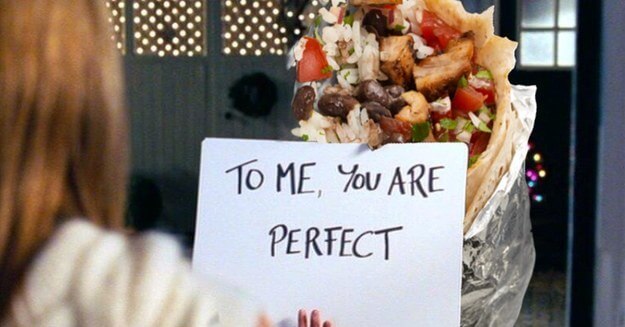
Via Universal Pictures/StudioCanal/Buzzfeed
I was wracking my brain, trying to think of an effective comparison to explain what it is I do, and I found the perfect one. A relationship (romantic or otherwise) and CRO (Conversion Rate Optimization). In order to increase conversions, you must really understand, interact with, and truly develop a relationship with your customers. While trying to explain that, I realized how much my relationship has taught me about Conversion Optimization and overcoming obstacles on the job.
So here are the top 7 tips for conversion optimization you can learn from relationships:
1) What works for others may not work for you.
Everyone likes to ask friends and family for relationship advice. And sometimes you hear pieces of advice that sound so great, yet they don’t seem to work in your relationship. What works for one couple, just may not for another – there are many factors that influence this dynamic.
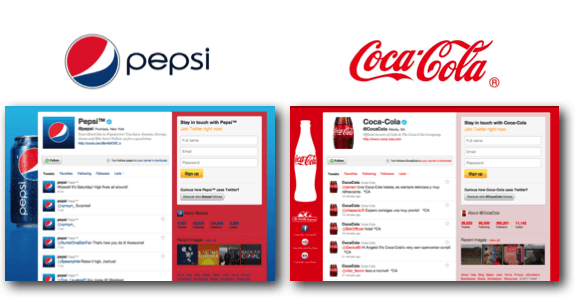
Check out Pepsi and Coca Cola’s Twitter Pages (photo cred:samrmorrisimc)
The same goes for conversion optimization. Looking to your competitors for advice is a good thing. Doing a competitors’ analysis can be really helpful for understanding the market better, your users better, and understanding yourself better as well. But while you could look at their strategies and tactics, these may not work the same for you. It is important to develop your own strategy with your own tactics that fit your product, your users, and your vision. Test different designs, understand your audience and make sure that your overall strategy fits with the designs you create.
The Take-away: Competitors’ Analyses are crucial to understanding the market, realizing the similarities and differences, and seeing what strategies and tactics others are using (or not using). With that information, create a site that works for your customers’ emotional triggers.
2) You have to really know your customer/partner.
In order to succeed in a healthy relationship, it is important to understand your partner. Before you move forward with them, you need to ask questions, get to know them- their likes and dislikes, their interests and habits, their hang outs and favorite tv shows.
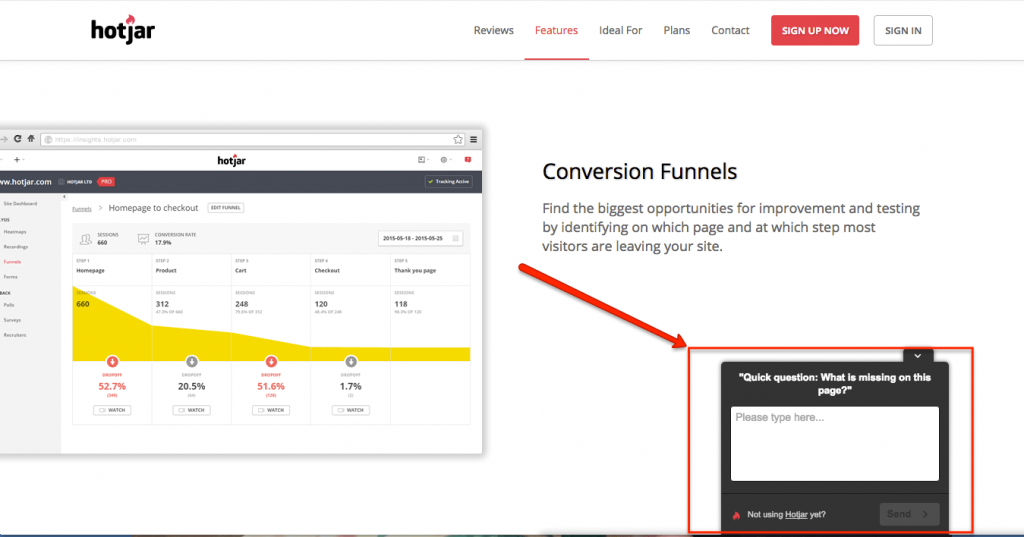
HotJar offers polls & survey services along with heatmaps and recordings – and they use their own products to ask users questions.
Understanding your target audience is the key to success in Conversion Optimization. Sometimes we are able to survey our users and actually ask them directly how they feel, which is ideal. Surveys, polls, and even pop ups are a great way to communicate with your users to see how they feel about your product/service and why they decided to use it, or not. This is key to understanding how people view you. In addition to surveys and polls, we can use other tools to learn about our user, like Google Analytics (what pages are viewed, what events take place, what buttons are clicked), Heatmaps (where people move their mouse, what do they click) and recordings. Another great way to gain an understanding of your users is to read reviews! Using this information, we can build marketing personas for our target audience, and then develop a strategy on how to increase conversions.
The Takeaway: Use surveys and polls, analytics programs (e.g. google analytics or kissmetrics), heatmaps (e.g. hotjar or crazyegg), and reviews to understand your users and learn the most effective ways to emotionally target them, and through that, convert them.
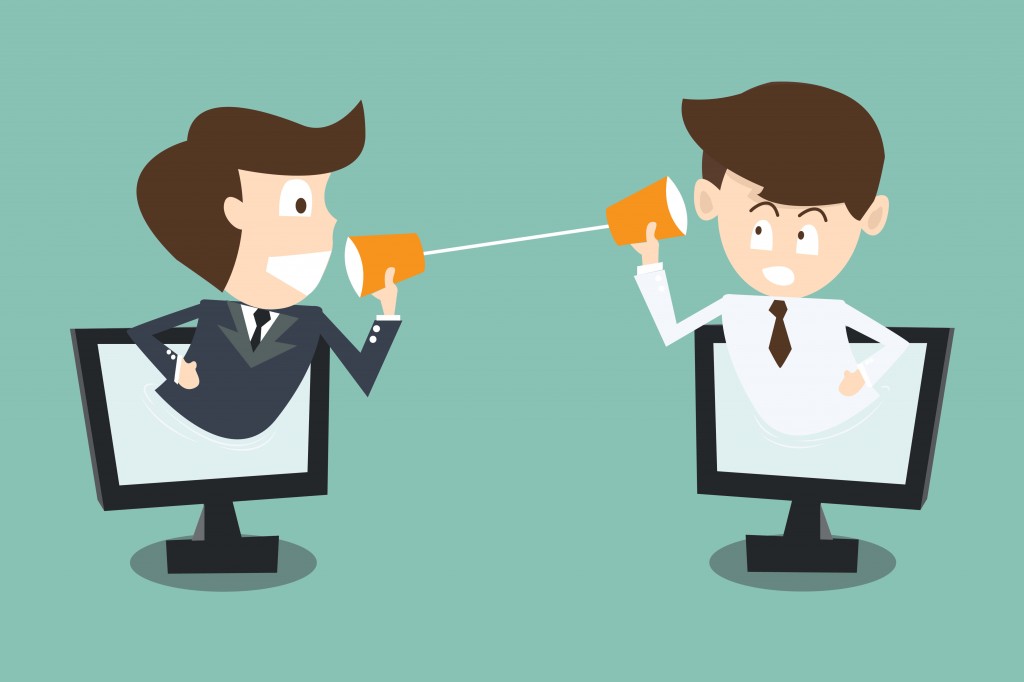
3) Communication is the key to success.
Once you get to know your partner, and really understand them, you now can communicate with them better. You know what things will upset them and what will make them happy, and you should communicate with them appropriately. You need to communicate with your partner about your emotions, and theirs as well, in the most effective way.

With CRO, communication is even more difficult! You are trying to reach your target audience, and they may have a lot in common, but they also have a lot of personal history, emotional triggers, and who knows what emotional reactions to different words! You have to consider your strategy, structure, images, and copy and what emotions they may trigger in your audience to make sure you are affecting them the way you want.
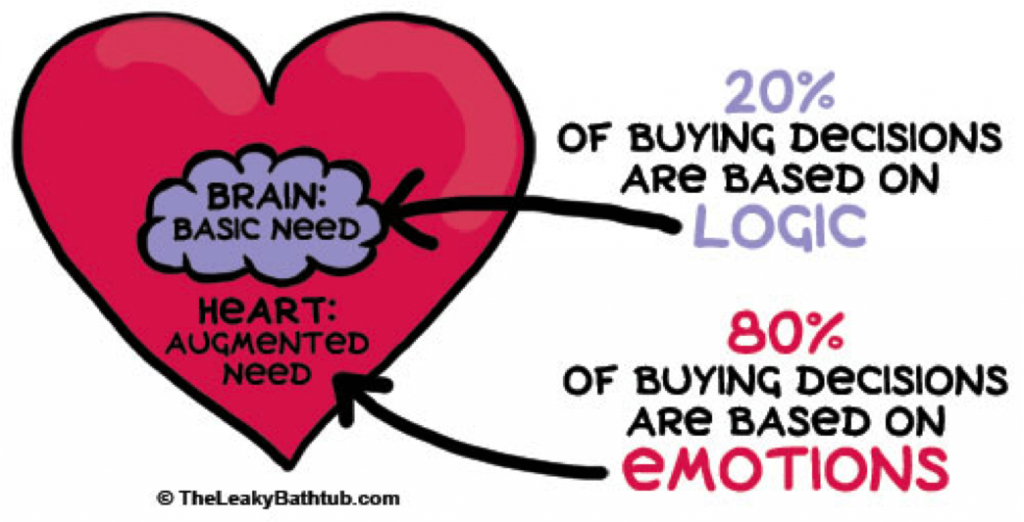
The Takeaway: After you’ve gotten to know your users, with the tools mentioned in #2, you need to really think about what and how to communicate with them.
4) Be Clear About What You Want.
In our busy day and age, between work, relationships, family, life goals, and friends sometimes we are so overloaded with information that we don’t catch the hints from our partners, and our partners miss the hints we send. No one is a mind-reader. So instead of getting all upset that they aren’t listening or don’t understand, you have to just be clear about what you want.
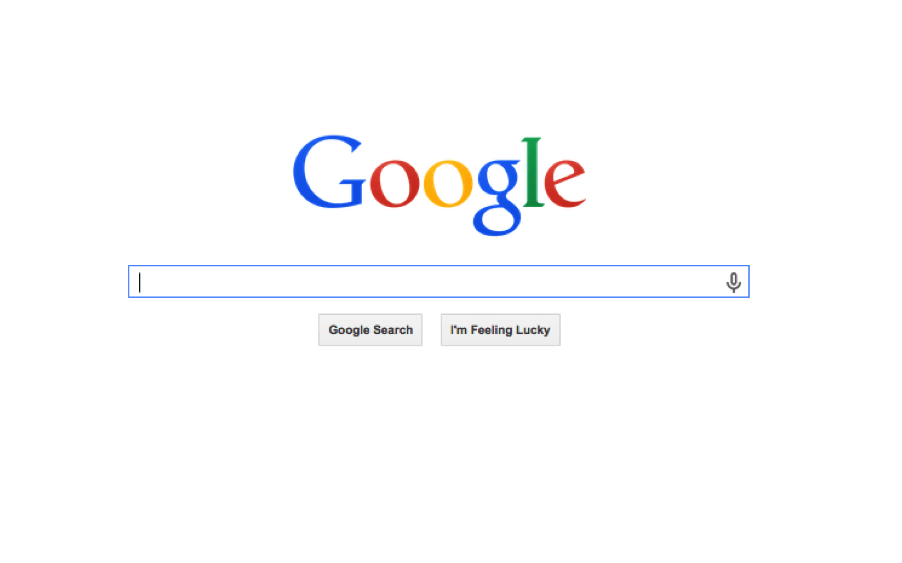
Google isn’t fancy, has no arrows, but it also doesn’t have much to distract you from what it wants you to do….search.
In Conversion Optimization, the same rule applies. But in CRO, it’s even more important to be clear because we are exposed to much more content and so many things are happening all at once. You just have to tell your users what to do. We have run tests upon tests and have found that when we make a large, stand out Call To Action, with an image that directs the attention to that call to action, and large arrows, you get a higher conversion rate.
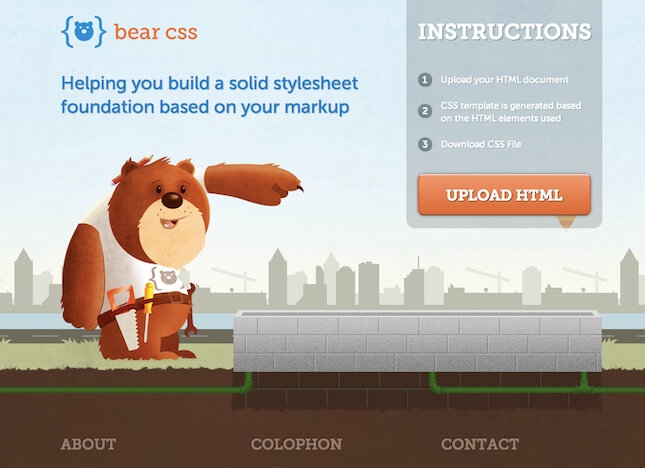
Look at this landing page. There is one, clear call to action, and a giant bear literally directing you to it!
Of course, your design has to match your strategy. But at the end of the day, with your emotional triggers, your images, your CTA (Call To Action), and your copy, you should always show your users what you want them to do.
The Takeaway: Remove any unnecessary messaging and make it easy for the user to understand what they should do next. Essentially, all parts of your landing page should work towards getting your customer to take one action.
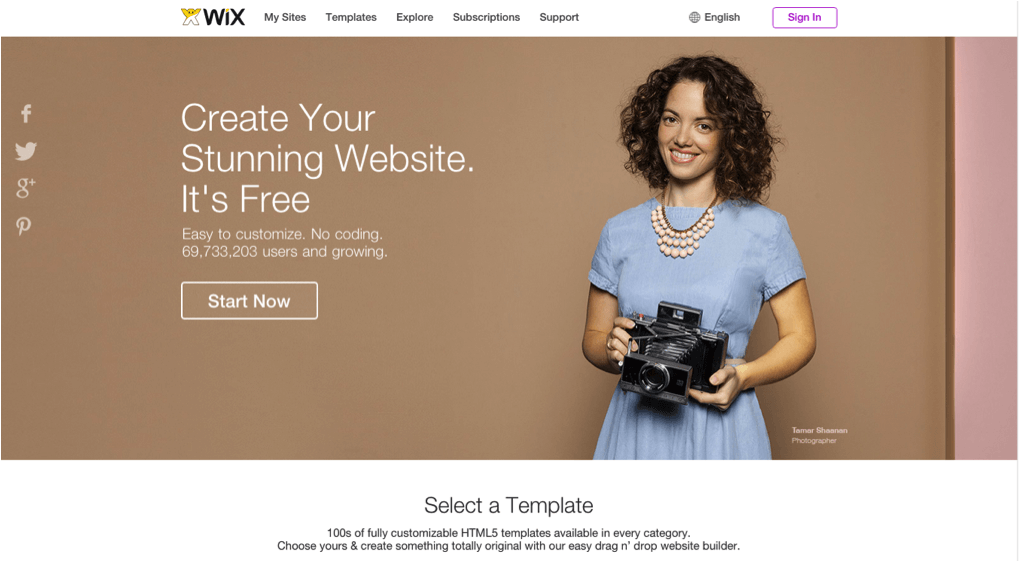
Wix make it clear what you should do -Start Now. There’s only one button there.
5) Looks aren’t everything.
When you just start a relationship, appearance is important. You have to be attracted to that person . But in the long run, it’s who they are inside that really keeps you going.

While appearance is very important in CRO, it’s more about the strategy and tactics behind it. You have to have that powerful image that will move your target audience to do what you want them to do, but your content, your testimonials, your colors, and your trust icons (emotional triggers) are what will help your target audience take that next step and convert. We have learned from experience that the designs that may not be as aesthetic as we had originally planned -with neon colors and flashing lights – get the best conversions.
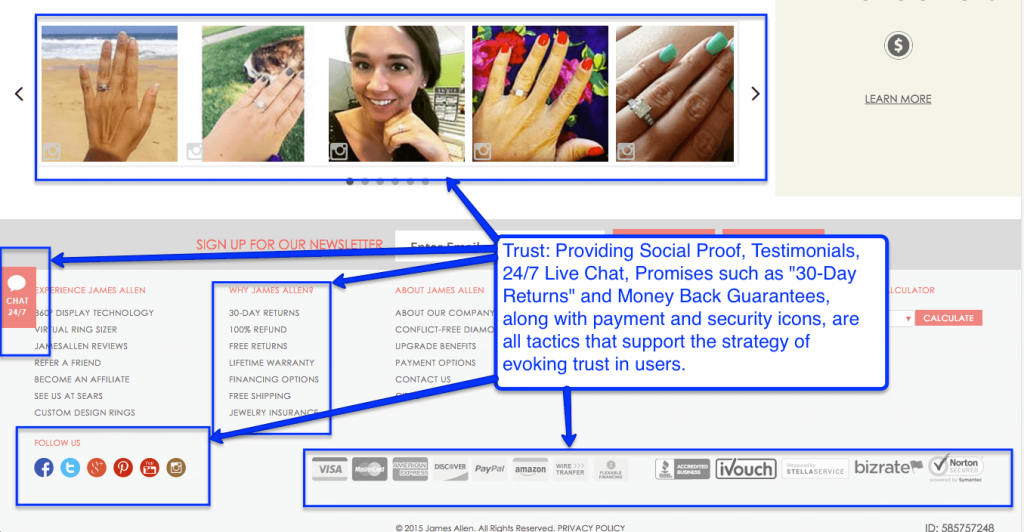
James Allen does a good job using a lot of different tactics in order to give their customers a sense of trust.
The Takeaway: Don’t limit yourself to only things that work with your set design. Be willing to step beyond what you think is aesthetic, and base your decisions on strategy and tactics – work towards what converts.
6) Learn from your mistakes.
In a relationship, things don’t always go as you thought they would. Sometimes you plan a surprise picnic in the forest and you have everything set, only to find out they have a fever, or are allergic to the food you brought, or it’s raining!
These are all learning opportunities! Like how your partner acts in these situations, what they are allergic to, and that you should check the weather next time.
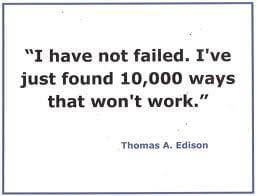
Unexpected things happen, in Conversion optimization as well. The results don’t go the way you thought, or your users surprised you, or the traffic suddenly dropped and with them, the conversions. Things happen! What do you do? You learn everything you can, you implement changes and you test again!
The Takeaway: Just because a test didn’t go as you expected doesn’t mean you failed. It means you should find the reason, reassess, and try a different strategy or tactic.
7) It’s a continuous process. You have to keep working on it.
If you want a relationship to make it past that honeymoon stage, you know it’s constant work. You have to work through fights, and you have to constantly improve it. You have to continue to put in the effort – bring gifts, plan surprises, cook nice dinners, go on date nights, go on some romantic trips…You can’t just invest in flowers on the first date and hope that keeps you going for the next 10 years.
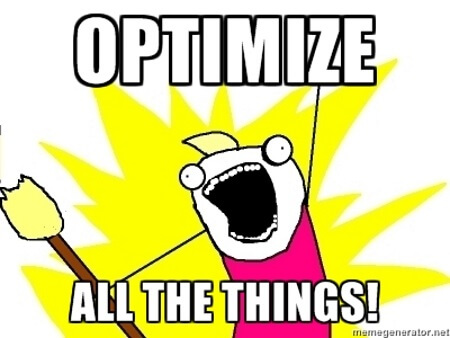
Conversion optimization is never-ending, constant work as well. You can work on this great CTA, and see an improvement and then create an awesome landing page that brings an even bigger increase. But you can’t just stop there. You should continuously test to see if you can improve further. Maybe you can get an even greater e-commerce rate increase with a certain design you haven’t found yet! Maybe you can decrease the load time even more, and add quality content that will increase your conversion rates by another 10%. Also, things that have worked before may, at one point, stop working. Every improvement is good, and continuous testing is key to optimizing your page.
The Takeaway: There is always room to improve, so keep testing. But don’t just change things by following your gut. Test test test! Optimization is a continuous, never ending process.
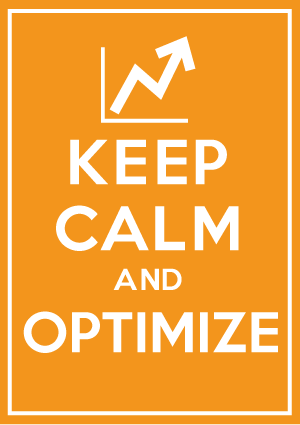
Overall, the intricate dynamics of relationships and their rules have a lot of applicability to conversion optimization. Looking back, here’s all the things we learned:
-
Research your competitors and get to know your market, but create your own strategy and tactics.
-
Know your target audience. Contact your users to gain a better understanding of them
-
Communicate! Think about the message you want to send your target audience and how you want to send it.
-
Be Clear- You have to communicate clearly what you want the user to do.
-
Focus on data and what works
-
Learn from everything – whether a test goes well or not, there is always a lesson to learn and something to improve in the next test.
-
Continue optimizing and working on improvement.
So that is why Conversion Optimization is like being in a relationship.
What’s your perfect metaphor for CRO?


Pingback: This Week in Internet Marketing 2015 08 18 | Ashim Dutta()
Pingback: Tips For Building Better Customer Relationships()
Pingback: 9 Metrics to Follow Before Launching Your Next Conversion Optimization Test | RankWatch Blog()